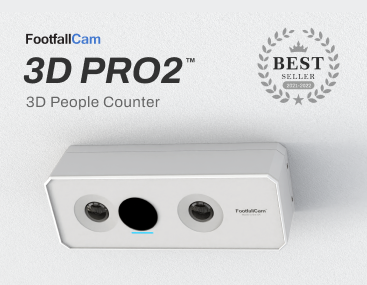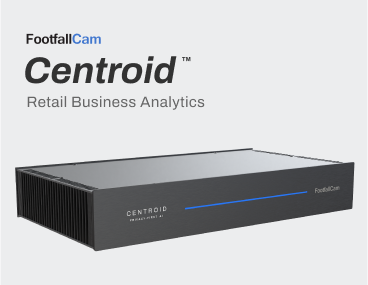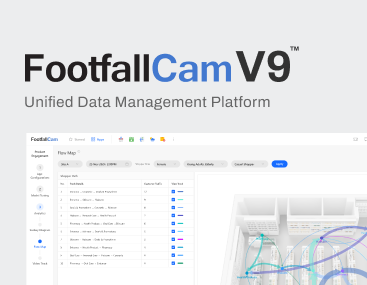1 Executive Summary
This policy is a necessary requirement to ensure the FootfallCam fulfils its moral and legal duties for safe, compliant, environmentally and financially sustainable Waste Management. This policy provides guidance to all staff and defines responsibilities in all aspects of Waste Management with clear standards for appropriate waste segregation, storage, handling, transport and disposal.
2 Introduction
Waste Management is the generic term given to the whole spectrum of activities associated with waste, namely, its generation, segregation, storage, handling and transportation from point of source (department) to final place of disposal (recycling/landfill/incinerator). This policy details the FootfallCam's arrangements, including responsibilities, for the classification, segregation, collection, storage, handling, transportation and disposal of all waste produced as a consequence of the FootfallCam's activities.
3 Scope
This policy applies to all services directly provided by the FootfallCam and all staff should familiarise themselves with the policy.
This policy encompasses the activities and responsibilities of all FootfallCam staff, including in on-site customer meeting, on-site installation and site visitation when applicable.
This policy also applies to all contractors and temporary workers who are engaged to work on the FootfallCam premises.
4 Aims and Objectives
This policy has been prepared with the objectives of:
-
Ensuring compliance with all relevant legislation;
-
Providing all staff with guidance in the safe handling and disposal of waste in line with health and safety and infection control requirements;
-
Enabling staff to recognise and comply with all legal requirements;
-
Identifying specific responsibilities;
-
Identifying and promoting safe methods of segregation and disposal;
-
Reducing the impact that the FootfallCam's business has on the environment.
5 Waste Management Legislation
This policy describes the FootfallCam arrangements for discharge of these responsibilities particularly under:
-
Environmental Protection Act (EPA) 1990
-
The Controlled Waste Regulations 2012 SI 811 (revokes the 1992 regulations)
-
The Producer Responsibility for Packaging Waste Regulations 1997
-
The Hazardous Waste (England and Wales) (Amendment) Regulations 2009
-
Waste Electrical & Electronic Equipment Directive 2007
-
The Landfill Directive 2007
-
Batteries Directive 2008
6 Implementation of the Waste Policy
6.1 Waste Hierarchy
The strategy uses the principle of the waste hierarchy:
-
REDUCE - the best approach to waste is to reduce it at source.
-
REUSE - If you cannot reduce it, then try to re-use it.
-
RECYCLE - If you cannot re-use it, then try to recycle it.
6.2 Implementation
Several recycling wastes streams have been implemented within the FootfallCam premises diverting much from landfill. The key to successful recycling and reduction in landfill is to collect at source and segregate. A number of contracts with waste management and recycling firms have been established in order to provide the means to implement the waste policy.
The following items are currently recycled:
-
-
All paper products (Except tissue paper)
-
Cardboard (Flattened for storage)
-
Wood
-
Metal
-
Media waste (CDs, DVDs, floppy discs, cassettes)
-
Plastic bottles, packaging, cups, food containers and all metal cans
-
Glass
-
Batteries
-
Carpet Tiles
-
Waste electrical & electronic equipment (Hard disk drives, computer hardwares, peripherals, network equipment, etc.)
-
Furnitures
-
All other waste is compacted with 75% segregated for further recycling and 25% converted to refuse derived fuel.
6.3 Purchasing
The purchasing function has a real impact on the quantity and recyclable value of waste. Choosing and buying recycled products is part of an overall waste reduction strategy. As source reduction is an issue that often gets overlooked the Purchasing Department consider the following activities as part of its function:
-
To cut down on over-packaged products (Is packaging reusable?)
-
To purchase refillable or reusable products (Printer or toner cartridges)
-
To use or lease equipment that has waste reduction features (Photocopiers, email, etc.)
-
To use durable items where relevant, not one-trip disposable items (Rechargeable batteries)
-
To buy equipment that can easily be mended or has interchangeable parts
-
To specify / buy items made with recycled materials
-
To check stationery supplier catalogues for recycled items
-
To consider using cost savings from waste reduction activities (Photocopiers set to double-sided, to pay for activities that may cost a little more until economies of scale come in to play.
-
To investigate the options of centralised purchasing between organisations. Bulk buying cuts costs and gives more negotiation power with the supplier.
These examples are by no means comprehensive but, in general, when buying materials, the Purchasing Department should consider if the product is reusable and has been or can be recycled.
7 Procedures for Recycling and Disposal
7.1 Non-hazardous Waste
7.1.1 Cardboard
Cardboard should be flattened and placed at the designated waste collection point within the FootfallCam premises.
7.1.2 Cans, Plastic Bottles / Wrapping and Cups
There are specific containers for cans, plastic bottles and plastic cups which can be found within the pantries in the FootfallCam premises.
7.1.3 Glass products
Glass bottles or small quantities of glass products can be placed at the designated collection point within the FootfallCam premises. To recycle large quantities of glass products, contact Christina (EXT. 123) to hire a contractor for relocation and to be handled by the porters at any external collection point nearby.
7.1.4 Toner Cartridges
Printer inkjet and toner cartridges from both workgroup laser printers and multifunction printers are recycled by sending it back to vendors for further handling.
7.1.5 Media waste (CDs, DVDs, floppy discs, cassettes)
All media waste will be inspected by IT and will be destroyed should there be any confidential data stored within. After inspection, the media waste can be sent to the relevant person for recycling.
7.1.6 Confidential paper
Small quantities of confidential data should be destroyed in the local shredding machines and will be removed by the relevant person from waste collection points.
Large quantities of confidential paper that are not feasible to be destroyed using the local shredders can be destroyed off site. Put the paper in yellow bin liners and place them at the designated waste collection point. Then, contact Christina (EXT. 123) for further process, and inform Christina if the security becomes the main concern, which will advise the handling personnel accordingly.
A small amount of confidential paper, from the payroll office, is shredded on site through an external contract.
7.1.7 Non-Confidential Waste Paper, Magazines, Journals, etc.
This can be placed at the designated recycling bins.
7.1.8 Non-recyclable Office Waste
This can be placed into the General Waste Bin prepared within FootfallCam premises.
7.2 Hazardous Waste
7.2.1 Clinical Waste
This is collected every 2 weeks from specific designated areas.
7.2.2 Batteries
This will be collected by the IT and will be sent to related recycling organisations for further processing.
7.2.3 Fluorescent Tubes & Sodium Lamps
Spent tubes are stored securely for pending collection by a registered waste carrier, for disposal as hazardous waste.
7.2.4 Waste Electrical and Electronic Equipment
Going through Directive of Waste Electrical and Electronic Equipment (WEEE), ensuring manufacturer and importer compliance in the treatment of waste is essential, in addition to encouraging the reuse and recycling of the items. This responsibility can also be applied to the dealers as the majority of the IT equipment is supplied through dealerships, but essentially compliance rests with the product consumer (in much the same way as the disposal of a redundant fridge, which is the responsibility of the user).
FootfallCam Staff must adhere to the procedure of disposing the equipment, which includes:
-
-
Computer Electronic Hardware
-
Hard Disk Drives
-
Solid State Drives
-
Peripherals (Keyboard, Mouse, etc.)
-
LCD Display Monitors
-
CRT Monitors
-
Networking Hardware
-
AC Adapters
-
Computer Accessories
-
Communication Hardware
-
IT must diagnose any potential reusable equipment before making final decision on disposing of the target equipment, further reducing the waste.
Equipment that can store or potentially store any confidential data must be inspected by IT to ensure all the confidential data destroyed, which primarily includes the Hard Disk Drives and Solid-State Drives, before passing the items to the authorised treatment facilitator for further disposal process.
Additionally, redistribution of the equipment to charities and schools for example, is always the best option for full recycling of component parts and re-use of waste materials.
All other electrical waste in FootfallCam is collected within an enclosed metal container and likewise disposed of through an authorised treatment facilitator.
7.2.5 Asbestos
Any asbestos waste, or other material waste presumed to contain asbestos, will be disposed of by authorised contractors in accordance with the requirements of the Hazardous Waste (England and Wales) Regulations 2005. The disposal process will be fully documented. Copies of completed Hazardous Waste Consignment Notes received back will be provided to the asbestos supervising officer for the asbestos register and held for 5 years.
7.3 Bagged Waste / Recycling
It is important that the correct waste goes into the appropriate sacks to ensure all recyclables are segregated.
As a general reminder, the sack colours for wastes are as follows:
-
Black: General waste
-
Clear: Shredded paper waste or any other office paper for recycling, plastic bottles and cans.
-
Yellow: Un-shredded confidential paper waste.
Please ensure individual sacks for collection are not overfilled, which is a maximum of 13 KG per bag. Generally, 'If it is too heavy for you, it is too heavy for the porters.
7.4 General Safety Precautions
All bags, containers and sharp boxes must not be filled more than three quarters full to enable safe handling, to prevent excessive weight and to avoid splitting the containers.
All clinical waste bags, sharps containers or boxes containing glass must be securely fastened before removal and marked to indicate the content.
Filled sharps containers or boxes containing glass must never be subsequently placed into any other waste bag or container before disposal.
Bags must be inspected by staff for adequate sealing and for no sharps protruding before handling.
Staff must handle bags by the neck of the bag and keep the bags clear of the body to minimise risk of injury by sharp objects. If this is exceptionally not possible to do, and staff have to hold the base of the bag, extra care must be taken to examine the bag for sharp objects before doing so.
Care must be taken when transporting and storing batteries that they cannot be shorted out by contact of one battery's terminals with another or by conductive materials.
Bring to the attention of your supervisor any bag that is hazardous because of sharp protruding, excessive weight or visible contamination on the external surface.
Any needles, syringes or contaminated sharp objects found in FootfallCam premises must not be handled personally. Report to Christina (ext. 123) who will contact the responsible personnel to handle.
8 Procedures for Ongoing Monitoring and Updating
It is the responsibility of the Operations section to ensure that changes in legislation in relation to waste and its derivatives are adhered to and that all affected units within FootfallCam are advised accordingly.
Regular communication between relevant units is essential and links will be maintained with relevant staff, particularly those mentioned within this document.
These procedures will be updated as required and re-issued at least annually in August each year.











